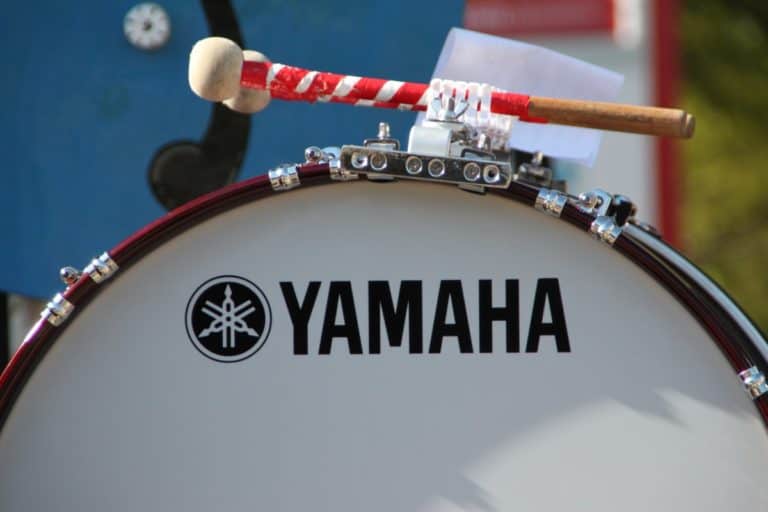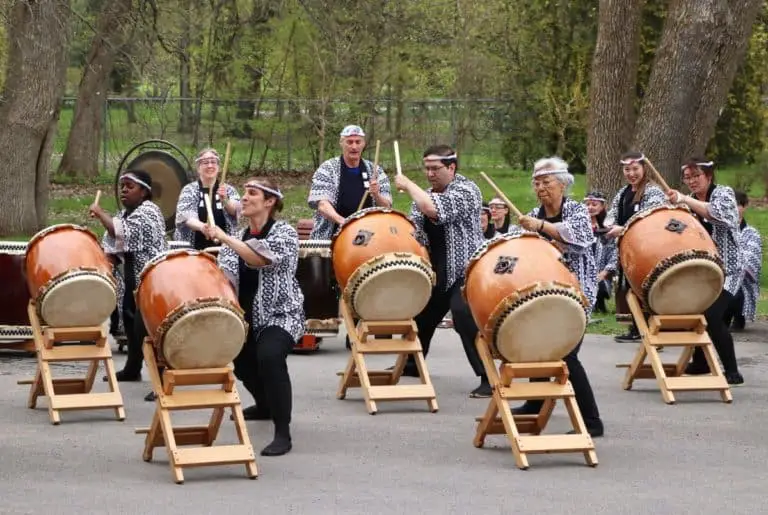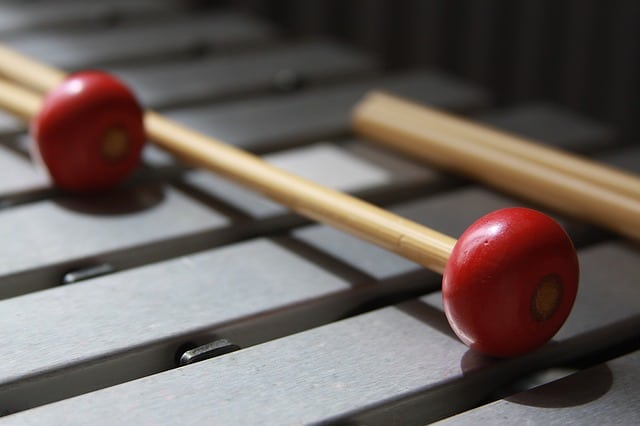11 Percussion Instruments Anyone Can Play
There is often someone in the room who owns a percussion instrument. When the topic of percussion is brought up, it is common for at least one person in the conversation to feel that the idea of actually playing would take far more skill and natural ability than they feel like they have. However, there are many percussion instruments that are relatively easy to learn, and these are the most popular..
What is the most popular percussion instrument? – Without a doubt, drums and drum kits are the most popular percussion instrument in the world. With around 200,000 new kits being sold every year in the US alone, contributing to a $372 million annual turnover on percussion instruments according to stats site Statista
Below is a list of 11 popular percussion instruments [not drum kits] that just about anyone can learn to play.
Timpani
Timpani, also known as kettledrums, is normally made up of four drums that sit in a semi-circle around the player, but may also include a smaller fifth drum that is used to reach higher pitches in orchestral play.
The exact way in which the drums are set up differs, depending on the region they are being used in, with German, Austrian, and Greek players choosing to set them up with the highest drum on the left and the lowest drum on the right. While North American, French, and British players will set them up in the opposite direction.
The method of playing timpani is by using the timpani sticks to beat the drum a few inches in from the edge. The velocity at which the drum is struck creates the varying tones that are familiar in timpani performances.
With a place in the majority of orchestras, timpani are one of the most popular instruments on the list.
Xylophone
The xylophone is easily one of the most recognizable percussion instruments on this list due to its frequent use in children’s programs. However, many of the recognizable versions of this instrument consist of metal bars, which actually identify them as glockenspiels.
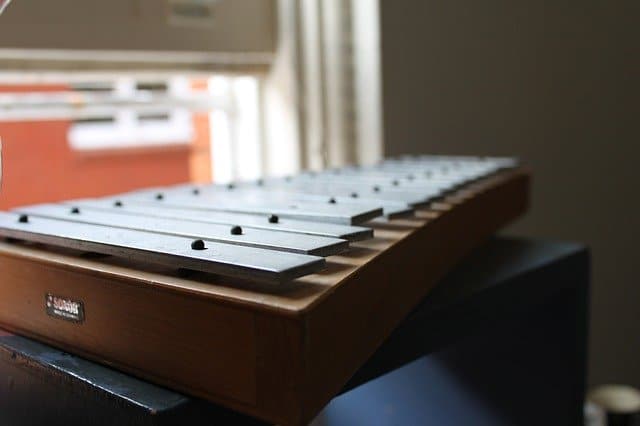
Consisting of a set of wooden bars that have been designed to resound with an individual pitch from a musical scale when struck, and a pair of sticks, or mallets for hitting each bar, the xylophone is an incredibly simple instrument to play.
The type and exact construction of a xylophone depends almost entirely on its usage, with more complex xylophones being used in large orchestral settings, and less complex constructions being used in somewhat less formal situations. This can also change from region to region around the globe, even to the point of using different types of material in the construction of the bars.
Cymbals
Cymbals can be seen in almost any orchestra around the globe, but are often more frequently associated with marching bands. They also have a home in jazz bands and even some heavy metal bands.
While the immediate image we see in our mind when we think of the cymbals is of a cymbalist crashing them together, they are also recognizable in nearly every drum kit in the form of a hi-hat. Drummers can strike the cymbals with their drumstick to create different sounds, depending on whether the hi-hat is open or closed.
Cymbals have been around longer than most civilizations, and as such, have found popularity around the globe. Their daunting, yet appealing crash can almost be conjured within your mind when you think of the instrument, putting cymbals near the top of the list in popularity.
Triangle
If you don’t know what a triangle is, simply think of its name. Consisting of a bar of steel that has been bent into the shape of an incomplete triangle, the instrument is commonly held by a piece of string tied to one of the corners. While the open corner, which prevents the triangle from having a specific pitch when the bar is struck, sits at the bottom of the triangle.
The triangle is used in a wide variety of situations, ranging from a simple dinner bell as seen in popular television programs to an incredibly complex instrument that is used by classical musicians in a number of challenging pieces.
Due to its rudimentary design and relatively easy method of play, the triangle is often seen as an instrument of the past, but don’t be fooled, it has been used since before the tenth century and continues to be used today.
Tambourine
The tambourine has been used in a variety of ways for countless years and has been recognized in musical cultures around the world, ranging from Turkish folk music to rock music.

The instrument is made up of a frame that can be wooden or plastic that holds a number of pairs of metal known formerly as zills. These zills vibrate in the frame and create a unique sound when struck by a hand, a leg, or even a drum stick. They can also be held in the hand and simply shook or rolled to make a jingling sound with the zills.
Tambourines are used on their own by tambourine players who will often hold them in one hand and strike them with the other. They can also be used as a part of a drum set, and are frequently part of simplistic instrument sets that are introduced to children at a young age, making them a very familiar part of the percussion family.
Chimes
Chimes have lost some of their notoriety as musical instruments due to their frequent use as decoration on the outside of homes. These windchimes make sound by being blown into a metal ring which causes vibrations in the chimes.
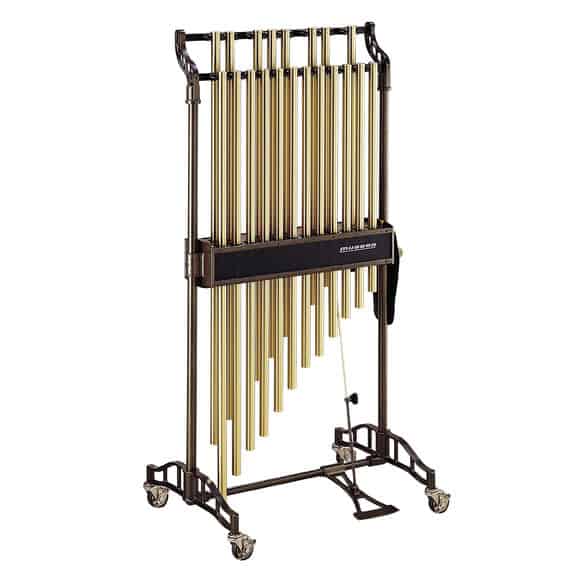
However, the instrument that can be played manually can be known as studio chimes which are a smaller, less expensive version than the larger tubular bells. This version of the chimes is made up of a set of metal tubes arranged from longest to shortest and held in a frame. The purpose of this instrument has been to mimic the sound of church bells.
The studio chimes are played by striking each tube or chime with a hammer causing the metal to vibrate in much the same way as a windchime vibrates.
The studio chime is much less popular than its décor-based cousin and may even be difficult to imagine without thinking about the windchime.
3 Percussion instruments growing rapidly in popularity
The following 3 instruments are growing in popularity around the world. The handpan and tongue drum are both relatively new instruments, in that they were not around more than a few decades ago. The Cajon has been around a bit longer than that, but its use is growing in recent years. Find out more about this trio of instruments below.
Handpan
The handpan is actually a recently developed instrument that was adapted from a number of similar instruments, most notably the steelpan.
Consisting of two round, shallow bowl-shaped, pieces of metal, one of which has been indented with a central divot or tone field and at least seven other tone field encircling the center. These two pieces of metal have been glued together and the bottom piece of metal has had the center cut out to allow sound to reverberate down and out of the instrument in much the same way as a drum.
The handpan is placed on the user’s legs, allowing the hole in the bottom to sit in the open space, while the top is struck with the player’s hands. It can also be placed in a nearby stand to reduce the amount that the vibration is muffled by the player’s legs.
Given the handpan’s recent development it has yet to reach the popularity of many of the other entries on this list but has become a quickly growing phenomenon around the world.
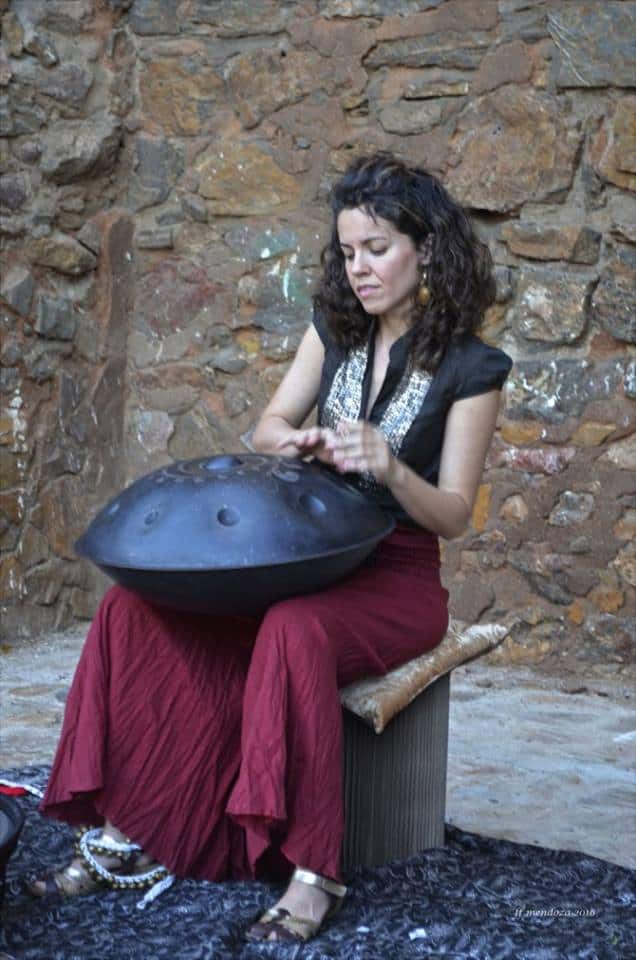
For more detailed information on Handpans, including history, how to buy, how to sell, as well as a pitted history and more, check out the complete handpan section.
Tongue Drum
The tongue drum is another instrument that has been created fairly recently and can be crafted at home if you know what you are doing. Using an empty 20lb propane tank, the base is cut off and approximately 7 to 10 tongue-shaped cuts are made all around the top of the metal in a circular fashion.
The tongues that are cut into the top of the instrument are designed by the maker to match specific tones so that when the tongue drum is struck by the hand or by the player’s mallets the drum resounds with a bell-like tone.
Given that the tongue drum was designed within the last 20 years it has not yet grown in popularity, though the use of empty propane tanks in its construction will likely increase its notoriety with DIY hobbyists looking to add to their possible projects in the future.
Steel tongue drums are growing in popularity. Take a look at my full section on Steel Tongue Drums, or my recommended gear page where I share my favourite tongue drums
Cajón
The cajón is an instrument that originated in Peru that resembles a box. Cajón players may appear to be simply sitting on a box, but this is the method that is used to play the cajón.
The cajón is made of five sheets of think wood and a thin sheet of plywood that is attached to the sixth side. The back side of the cajón will have a sound hole cut in the back to help increase the sound of the instrument.
Players will use their hands or brushes to strike the plywood side of the cajón, but may also be played using a drum kit’s bass pedal, though this limits the musician’s ability to strike the plywood with their hands.
With ongoing popularity throughout South America and increasing use in a variety of musical genres from rock to blues, the cajón is quickly becoming a well-known member of the percussion family.
Frame Drum
The frame drum is easily identified by the size of its drumhead. Officially, for a drum to be considered a frame drum the width of the drumhead must be greater than the depth of the drum itself, giving the frame drum a very wide, yet shallow surface area.
The basic design parameters have allowed the frame drum to come in a vast variety of forms, so long as it still adheres to the width and depth specifications, and this has given a significant amount of variability to the way in which it is played, though most cultures use their hands or a striking implement when playing the frame drum.
With ancient origins that span the globe, it is difficult to tell exactly when and where the frame drum was first used, but it known as the earliest example of a skin drum in human history, and remains as one of the most popular instruments on this list.

